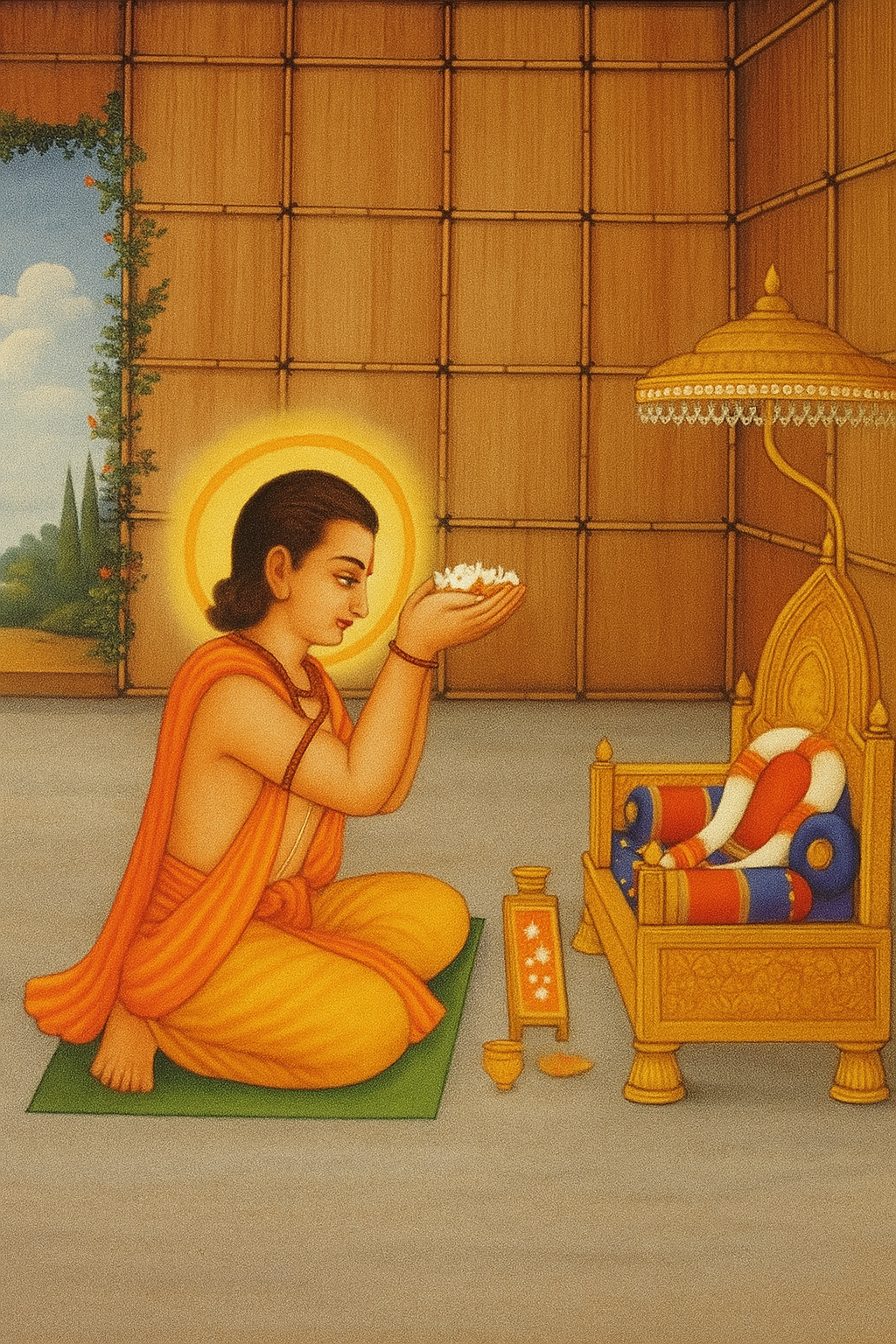
Bharata: The Epitome of Devotion: Introduction
The Epitome of Devotion: In the grand epic of the Ramayana, while Lord Rama often takes center stage as the ideal hero, his younger brother Bharata emerges as a symbol of unwavering devotion, loyalty, and dharma. Bharata’s story is not just about royal duty but about the spiritual strength of love and righteousness. His actions, selflessness, and dedication to his elder brother Rama are legendary, making Bharata a timeless role model in Indian culture and values.
The Epitome of Devotion :Why Bharata Still Matters Today
In today’s world of competition, ego, and ambition, Bharata’s story is a timeless reminder of the power of selfless love, family values, and moral integrity. Whether as a leader, a sibling, or a devotee, Bharata’s legacy continues to inspire.
He exemplifies the rare strength to walk the path of dharma even when circumstances are against you. In every temple, every Ramayana recitation, Bharata’s name is remembered with reverence.
The Epitome of Devotion: Who Is Bharata in the Ramayana?
Bharata is the second son of King Dasharatha and Queen Kaikeyi, making him the younger half-brother of Lord Rama. He is also the brother of Lakshmana and Shatrughna. Although born into royalty and entitled to the throne of Ayodhya by circumstance, Bharata’s moral compass and loyalty to Rama define his character more than his royal lineage.
The Exile of Rama – A Turning Point
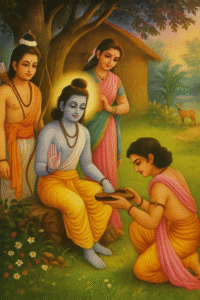
The turning point in Bharata’s story occurs when Queen Kaikeyi demands that her son Bharata be crowned king and that Rama be exiled for 14 years. Although this was done without Bharata’s knowledge or consent, it dramatically alters the course of his life.
Upon returning to Ayodhya and learning of Rama’s exile and his mother’s actions, Bharata is devastated. The fact that Bharata denounced the throne and Kaikeyi’s manipulations demonstrates his deep sense of justice and love for his brother, rather than accepting the throne.
Bharata’s Journey to the Forest
Determined to bring Rama back from exile, Bharata sets out for the forest along with the royal court, sages, and citizens.Chitrakoot is one of the most heartbreaking episodes in the Ramayana because of his emotional reunion with Rama.
Despite Bharata’s heartfelt pleas, Rama refuses to return before fulfilling his father’s word. Moved by Rama’s commitment to dharma, Bharata accepts Rama’s decision but insists on a symbolic gesture—he requests Rama’s sandals (padukas) to place on the throne of Ayodhya.
Ruling as Rama’s Representative
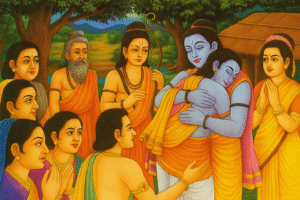
The padukas are placed on the throne by Bharata, who now rules the kingdom as Rama’s regent, rather than as Rama’s king.He vows to live a life of austerity in Nandigrama, outside the palace, until Rama returns.
This act of self-denial is one of Bharata’s most noble deeds. He runs the kingdom efficiently and justly but never claims ownership. His life becomes a penance, waiting for the rightful king—his beloved brother—to return.
Bharata: A Symbol of Dharma and Sacrifice
Bharata’s role in the Ramayana is more than supportive—he represents the ideal brother, the true servant of dharma, and a king without ego. His loyalty to Rama, sense of justice, and inner spiritual strength are admired across generations.
His conduct also reflects the high ideals of Ram Rajya, where personal ambition is set aside for the greater good. Bharata demonstrates that greatness doesn’t lie in power, but in humility, responsibility, and righteousness.
Key Lessons from Bharata’s Life
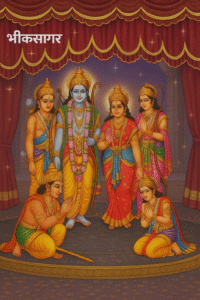
Loyalty Beyond Blood
Bharata’s devotion to Rama teaches us the true meaning of loyalty—based not just on familial bonds, but on moral and spiritual values.
2. Sacrifice for Dharma
He sacrifices royal comforts and personal ambition to uphold dharma, showing that real strength lies in renunciation, not conquest.
3. Leadership with Integrity
Though he ruled Ayodhya, Bharata never considered himself king. His leadership was rooted in service, not power.
4. Forgiveness and Compassion
Despite being the unintentional beneficiary of Kaikeyi’s manipulation, he never harbored hatred but handled the situation with grace and wisdom.
Conclusion
Bharata in the Ramayana is not just a character—he is an emotion, a dharmic ideal, and a beacon of what it means to love unconditionally. His life and choices remind us that power without righteousness is hollow, but love guided by dharma can transform lives and uphold justice.
In a world that often celebrates outward heroes, Bharata’s story quietly teaches us to be heroes within.
Who is the mother of Bharata in Ramayana?
The mother of Bharata is Queen Kaikeyi.
Who is the wife of Bharata in Ramayana?
The wife of Bharata in the Ramayana is Mandavi.
Who is the son of Bharata in Ramayana?
The son of Bharata in the Ramayana is Taksha (also spelled Taksha or Takshaka in some versions).
What is the role of Bharata in Ramayana?
In the Ramayana, Bharata plays a noble and selfless role. With his unwavering devotion to his elder brother Rama and his righteous nature, he was known to be a kind and loving person.
Brothers of Bharata in Ramayana?
In the Ramayana, Bharata had three brothers, making a total of four sons of King Dasharatha
Rama – Eldest brother, son of Queen Kausalya
Lakshmana – Younger brother and twin of Shatrughna, son of Queen Sumitra
Shatrughna – Youngest brother, twin of Lakshmana, son of Queen Sumitra
Did Bharata agree to be king after Rama’s exile?
No, he refused the throne and lived a simple life at Nandigram, waiting for Rama’s return.
Where did Bharata rule during Rama’s exile?
From Nandigram, not the royal palace. He ruled as Rama’s representative.
What did Bharata place on the throne in Rama’s absence?
Rama’s Padukas (wooden sandals) symbolize Rama’s authority.
What is the relationship between Bharata and Sita?
Bharata is Sita’s brother-in-law, as she is married to Rama.


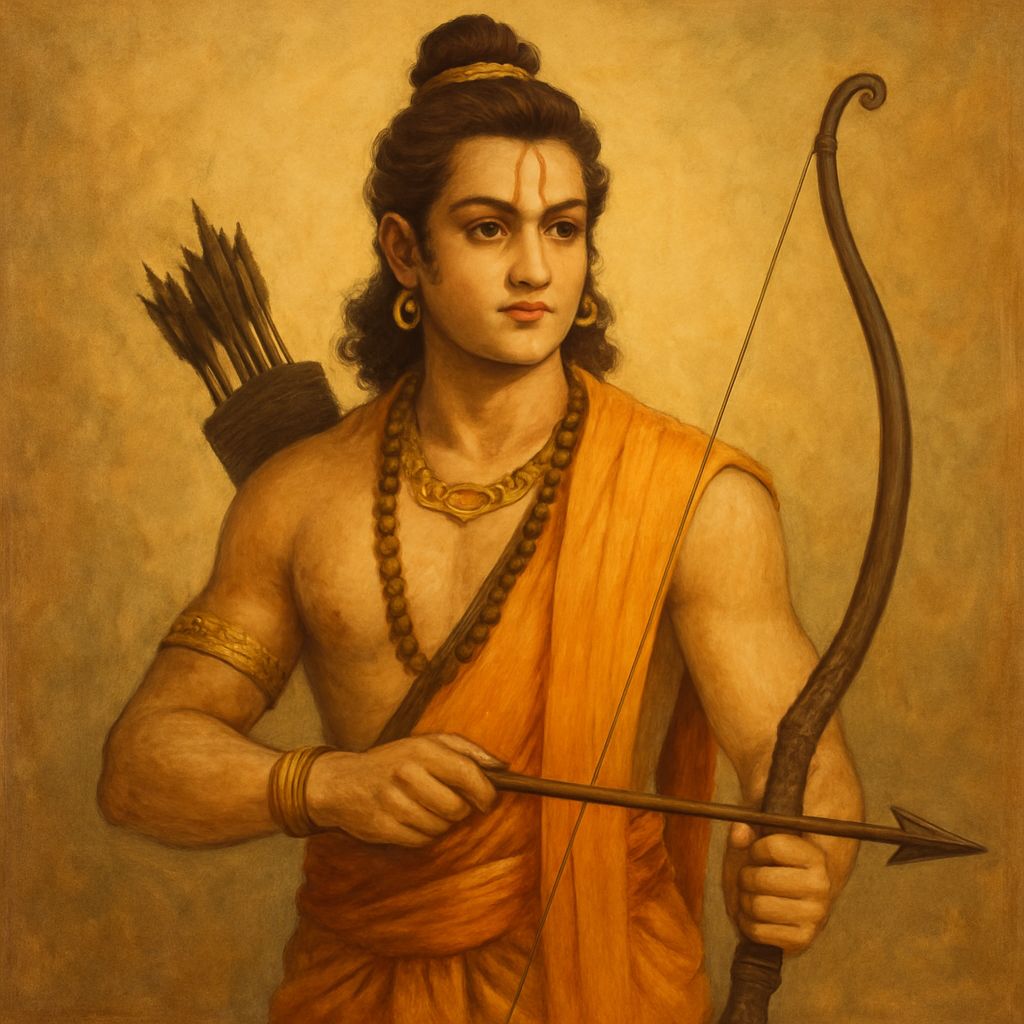
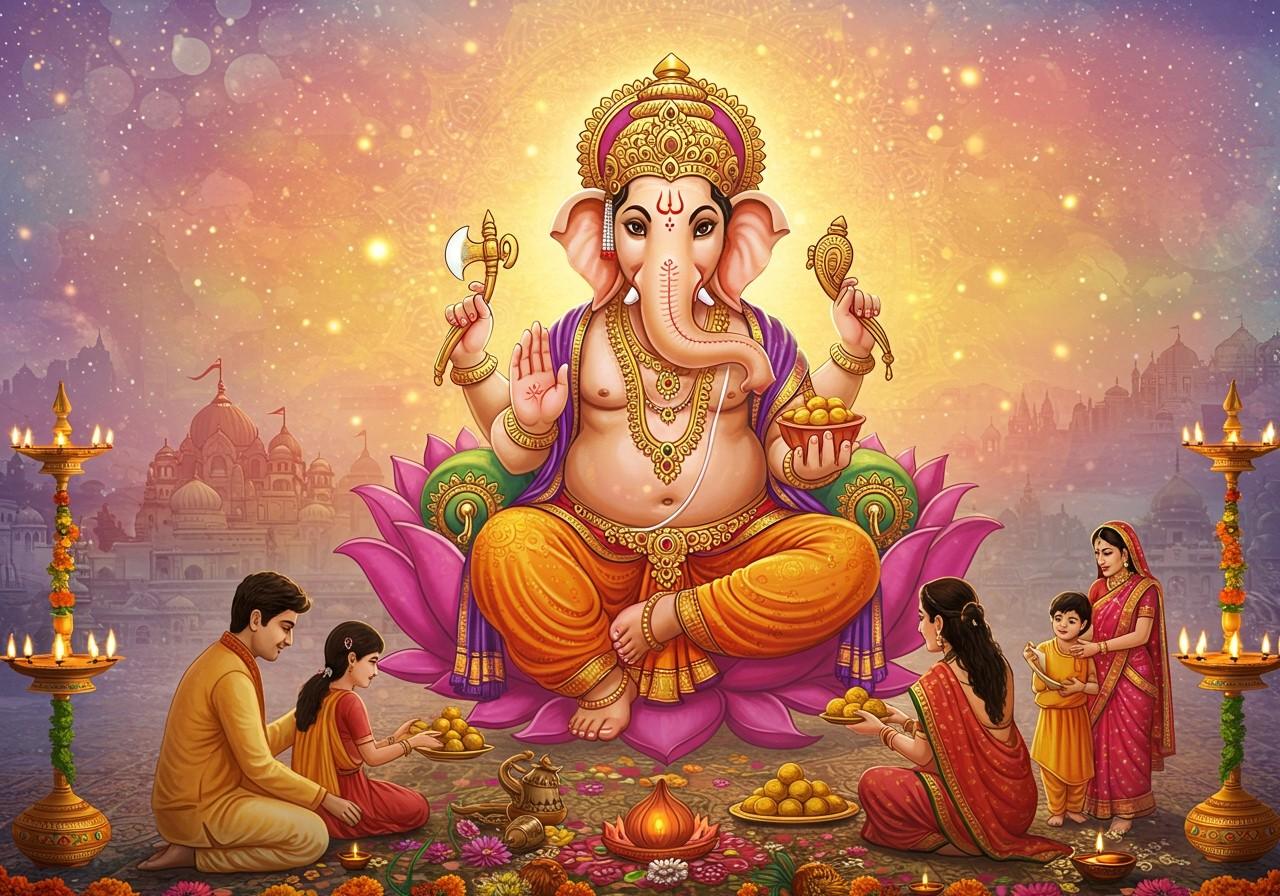

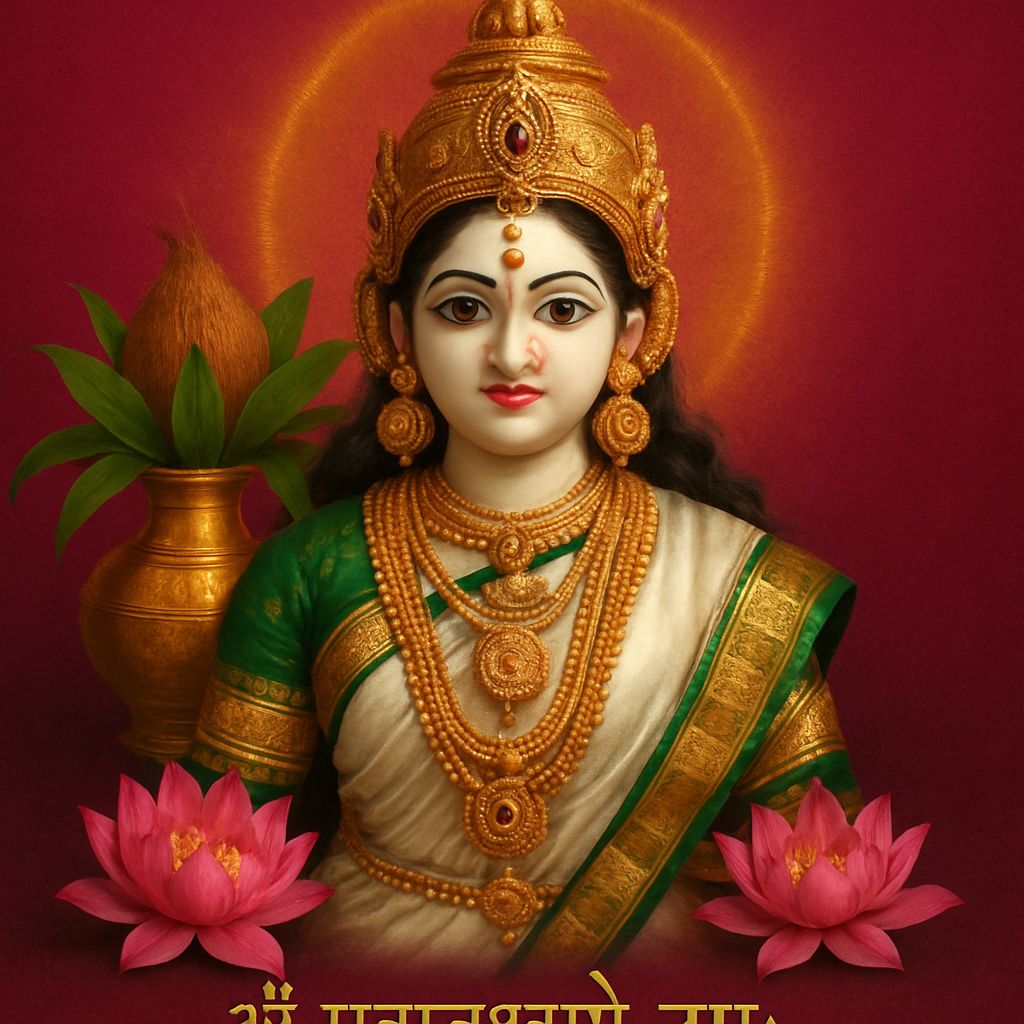
thank you very much